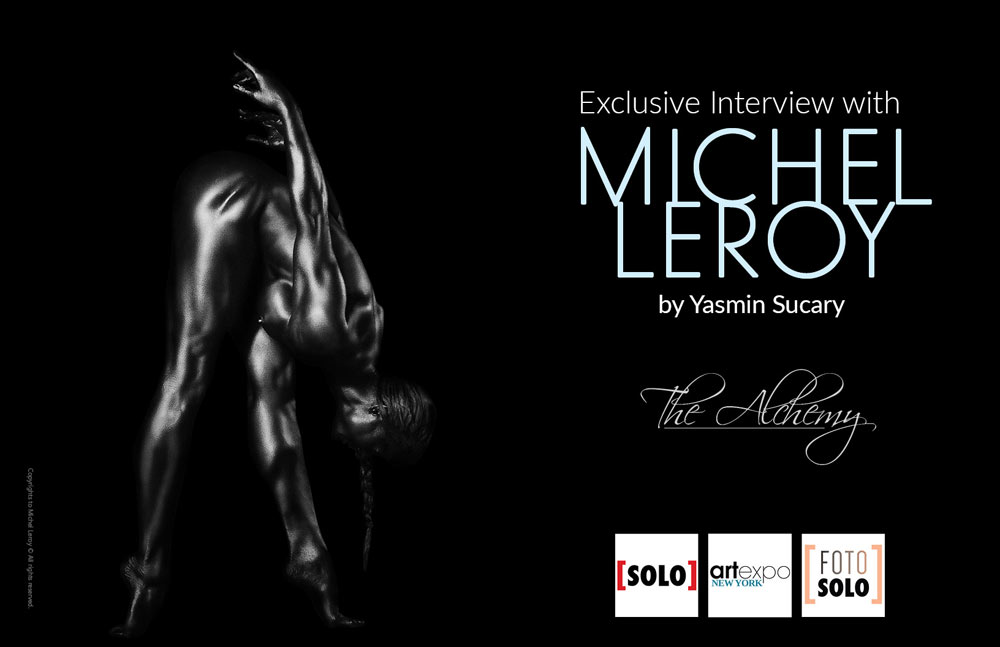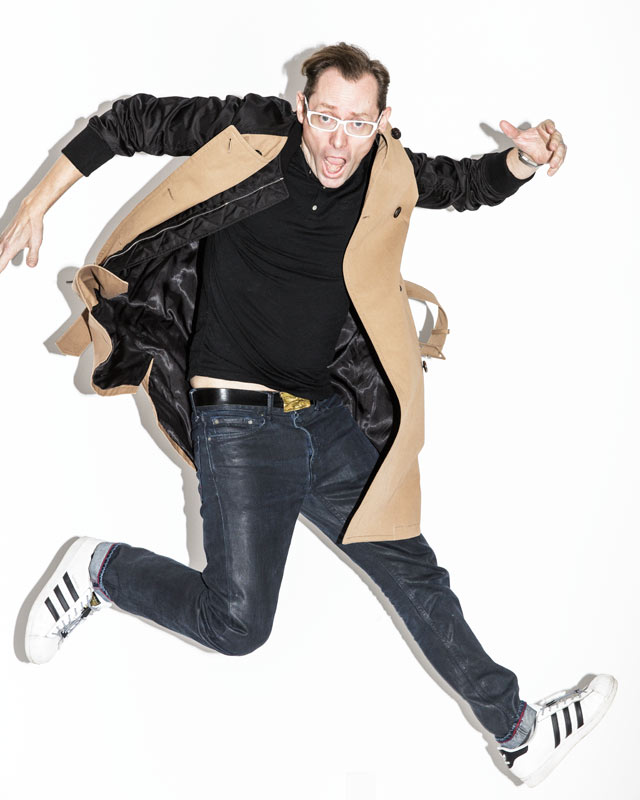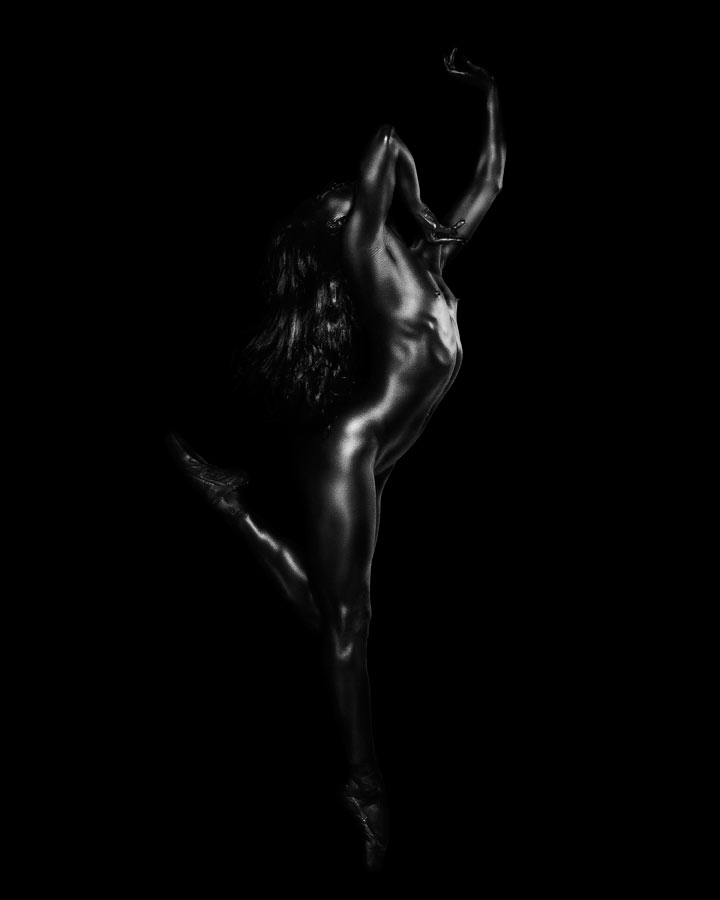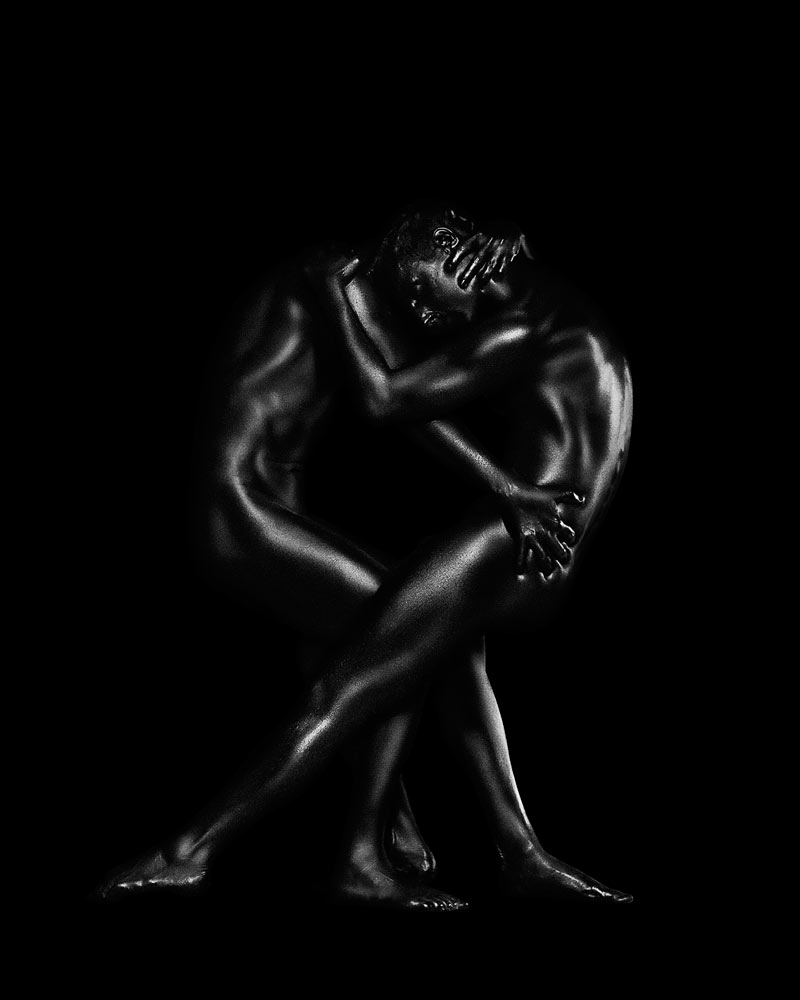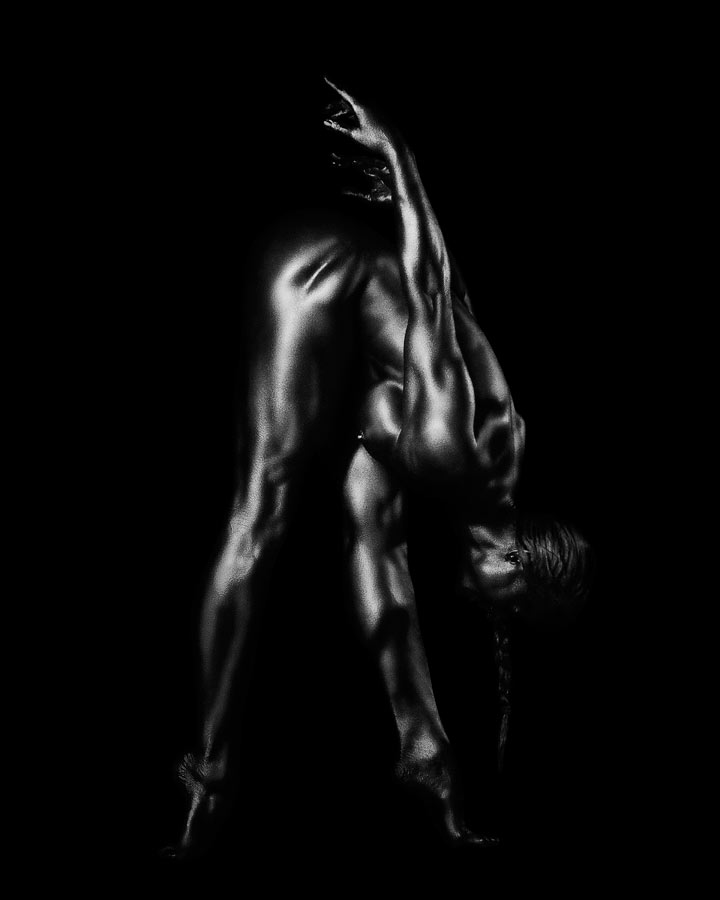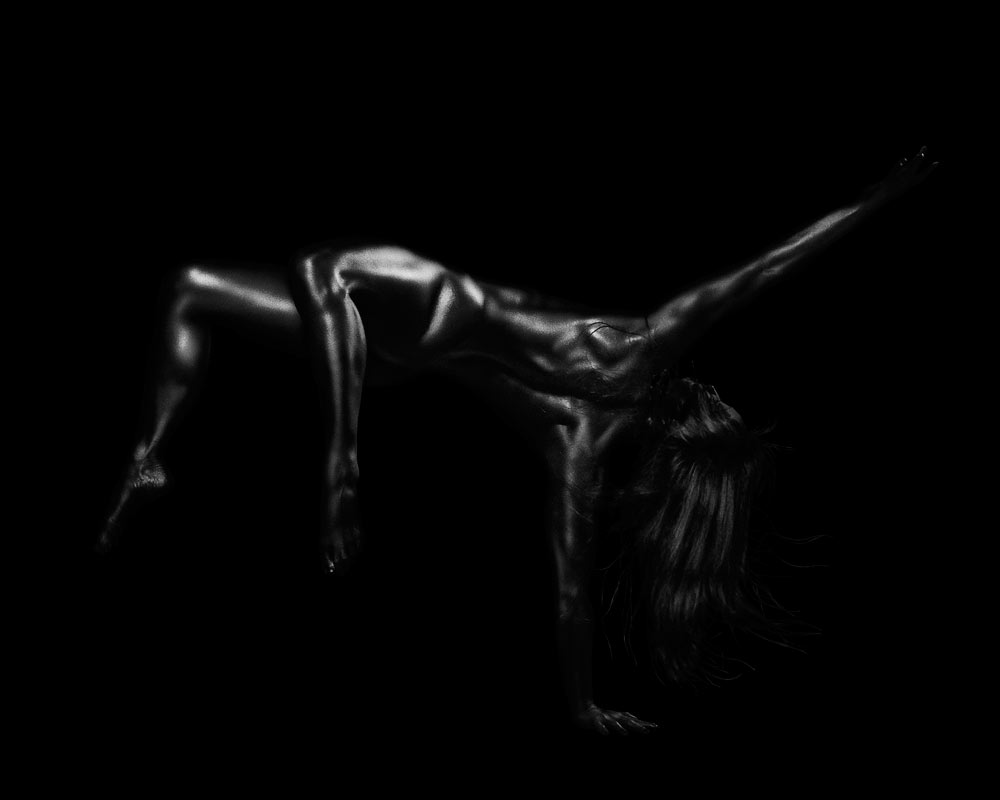MICHEL LEROY – Exclusive Interview
By Yasmin Sucary
– The Alchemy –
Michel Leroy is a New York based entertainment and advertising photographer with a produced style that captures an authentic connection to real personalities. From celebrity chefs to olympic athletes, the images reveal a level of comfort and vitality shared amongst friends.
The Alchemy series is a collaboration with photographer Michel Leroy and a range of professional athletes that explores the tension between sensuality and physicality. The images are simple in form, but rich in ideas and emotions. Moments of sculptural balance, anticipation and strength define the graceful lines and impossible gestures of this vivid Black and White series.
In these nudes the artist creates body-positive images that are exaggerated and explicit without sexual objectification. The images are a celebration of athletic confidence and vitality at its most pure. By emphasizing form over identity, he seduces the viewer to reveal empathy for body acceptance that transcends the self-image obsession of social media. The process of transmuting the skin metallic unites the constellation of skin tones and strips bare preconceptions while illuminating physical radiance.
The images are notable for the tactile permanence of flesh revealed through the unique in-camera style he has developed over a year of experimentation. The technique is of great relevance and bears witness to the labour-intensive process reminiscent of a Daguerreotype in the pixel age. The result is a series that balances poise and precision celebrated through the singular beauty of the human form.
Michel Leroy, a New-York based entertainment and advertising photographer. In addition to working with many celebs, major brands and other high-profile clients, Leroy has recently created an independent art exhibition regarding the theme of nudity: The Alchemy series.
We have reached out to him to hear about his life, past and current works and his
well-respected career in the field of photography in general.
Yasmin Sucary: Hello, Michel! Thank you for doing this interview with us.
Please tell our readers about yourself: where did you grow up? Do you have formal training in photography? And how did you get into photography in the first place?
Michel Leroy: The contrast between my early childhood, growing up in rural Montana, and my later years studying and living internationally really helped giving me perspective and taught me that people are basically the same wherever you go. As for photography, in high school I took a photography elective and I fell in love with the language of visual storytelling. I was hooked from that first roll of T-Max! I followed my initial passion with a BFA in Photography from the University of Dayton and worked as a photographer for the UD Public Relations department and the Dayton Daily News to help pay my way through college.
Y.S: Would you say your background of growing up in the American West has affected your artistic style? If so, how?
M.L: I was surrounded by the magnitude and grandeur of ‘Big Sky’ country and that absolutely affects my artistic style and everyday approach to life. In the course of a single day in Montana you can witness nature that is both serene and savage. Growing up amidst those two extremes in one of the most beautiful places on earth imprints a recognition of and respect for nature.
Y.S: You are a successful entertainment and advertising photographer, and while your individual artistic talent is clearly apparent, you chose to focus on the commercial aspect of photography in your career. What made you decide this way?
M.L: I started as a photojournalist documenting the relevance of our time through people and it wasn’t commercial at all. I only transitioned to commercial and advertising out of a personal desire to create images rather than just be witness to them. There is a fundamental difference between documenting something, which has a lot to do with being in the right place at the right time and creating an image from your own imagination. I have made a business of photography because there is nothing else I rather do. Decades later and I’m still as passionate about the language of storytelling as I was the first time I saw a contact sheet materialise in the dim red glow of my high school darkroom.
Y.S: Looking at your work, we mainly see portraits. What is it that draws you so deeply to photographing people?
M.L: I am drawn to the human element in everything. When you meet someone who is passionate about what they do, which can be anything from a local carpenter building a bookcase to an engineer building a monumental hydroelectric dam, they bring a level of experience and depth of knowledge that makes whatever they do fascinating. My interest in the people drew me to photojournalism and has been a defining element of my entire career.
Y.S: Your photography work has been repeatedly used in national campaigns and you have worked with famous, important characters, such as celebrities and professional athletes, on a regular basis. How does it feel to be in this position, as a photographer? Did you achieve your career goals?
M.L: My goal was and has always been to photograph people with passion. After graduating I moved to New York City because this town rewards talent and initiative more than any other place I know. Living in NYC and being relentless has allowed me to learn everything I can about commercial photography at the highest level. Having said that it wasn’t always easy. Like many, I had to work my way up from coffee-runner to running the show. On the merit of hard work and dedication, more than sheer talent, I have grown a client base who trusts me to travel the globe on assignment photographing the people that define our time.
How does it feel… that is a great question. I envy people who map everything out and have a clear path to success with action steps. My approach is more organic in the sense that my goals have changed over time as I have grown as an artist and professional but one thing has remained constant from the beginning, all I ever wanted was to create portraits and that singular focus has kept me trending in the right direction if not exactly hitting pre-planned milestones. Some achieve instant success and others, like myself, work tirelessly for 20 years to reach the same level.
Whatever the path, I am committed to a career of passion just like the people I seek to photograph.
Y.S: Tell us about the challenges of being a commercial photographer?
M.L: Where do I start! People will say things like ‘oh you get to work whenever you want’ and maybe it looks that way from the comfort of a regular paycheck but the reality is you have to work whenever a client calls. Rain or shine, 115º in the baking summer sun of Death Valley or -15º in the shade of an ice canyon outside Ouray Colorado in the dead of winter. It’s not all as glamorous as it may seem.
The real challenge of being a commercial photographer is learning to run your own business and the constant hustle for new clients and new work, don’t let anybody try and tell you otherwise. Learning to run a “business” and understanding cash flow is essential to sustain yourself and your creative vision over a career. Taking pictures is easy by comparison. In my experience taking pictures, the part we all love so much, is a small percentage of the actual work of being a professional photographer. Having said that, I wouldn’t trade it for the world.
Y.S: You clearly have an impressive, full resume. What were the “ups” and “downs” of your career? What was your biggest challenge, and would you say you have managed to overcome it?
M.L: The ups and downs never stop, they are simply the nature of the our business. You have to learn to pilot your own course despite the ups and downs. Photography, like many industries has witnessed monumental changes in the past 20 years that crush businesses who are too set in their ways or too slow to react to major shifts in the marketplace. The shift from film to digital was a paradigm shift for a generation of photographers followed by the great recession a few years later and the rise of social media. If you aren’t ready and willing to change course your business might not make it when something as trivial as #iphoneonly becomes a badge of honor for young photographers.
I try and keep true to my vision and accept that sometimes I’m riding the wave and sometimes I’m getting knocked about by it.
Y.S: How would you describe your style of photography? Has it developed over the years? If so, what were the factors that affected the transformation, and how are their effects manifested in your work?
M.L: My style is “produced” for sure but it wasn’t always. I think your style evolves as you do as a photographer and mine absolutely has. I came from a journalism background where my idea of lighting involved an on-camera flash with a 3×5” notecard held on with a rubber band to bounce some light around. When I transitioned to advertising it became clear very quickly there are no excuses for an image not coming out when there are 15 people on set and you have the talent for a total of 5 minutes. When the stakes are that high you can’t rely on a sunny day or mild weather for the success of an image, instead you have to create the results you want through solid concepts, collaboration and sheer force of will. This level of production and lighting control doesn’t have to get in the way, in fact it can free you because there are no barriers between your raw ideas and your ability to translate them into tangible images.
Y.S: In your project, “Alchemy”, which is presented here, you created black-and-white nude photos of athletes in different positions. How did you get the idea for this project? What are you trying to say or express through the nudity, and through the project as a whole?
M.L: Alchemy is an exploration for me as an artist more than a professional photographer. I wanted to create something that tapped into my own passion for the singular image without all the constraints of client work. After years of shooting assignment-to-assignment I craved a long-term project with depth that would allow me to create images that are beautiful on their own merits. I also wanted to keep revisiting a single idea again and again over time.
The concept for Alchemy came from wanting to create something unlike anything I had ever seen. The human form as a theme runs through the entire history of photography, painting and all visual art to be sure but I wanted to create something new. To achieve this I knowingly broke every rule I could think of as a portrait photographer. It’s also really important to point out that for me, and the athletes I collaborate with, the Alchemy series is not about nudity, it’s about movement, poise and precision celebrated through the human form. The truth is I also couldn’t think of any clothes that would add to the singular beauty of the images so I eliminated them.

